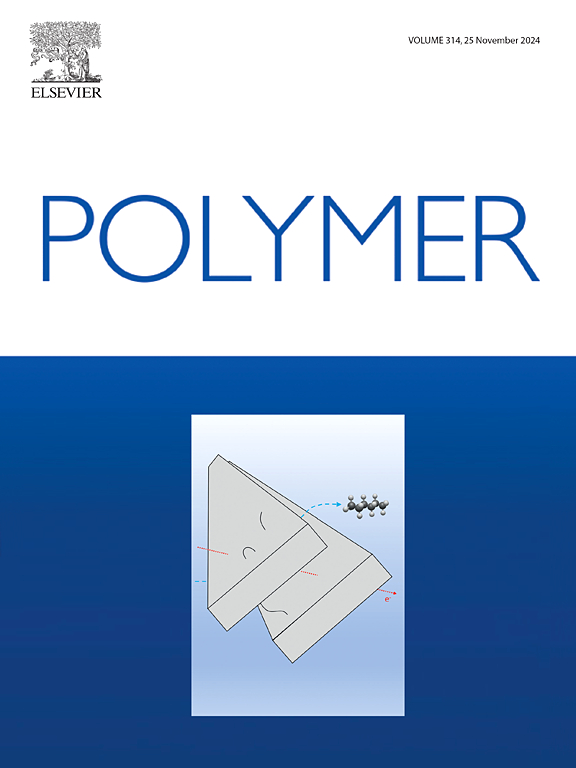Reassessment of the epitaxial mechanism of Poly(l-lactic acid) on polyethylene substrate
IF 4.1
2区 化学
Q2 POLYMER SCIENCE
引用次数: 0
Abstract
Epitaxial crystallization of poly (l-lactic acid) (PLLA) on oriented polyethylene (PE) films with fold chain lamellar structure has been confirmed to produce cross-hatched edge-on lamellar structure with majority of PLLA lamellae aligned along the PE chain direction while minor PLLA lamellae inclined by 64° to the PE chain direction. The origin of the major PLLA lamellae has been correlated to a soft epitaxy, also referred to as graphoepitaxy, based on the alignment of PLLA chains along the grooves made of alternatively arranged PE crystalline and amorphous regions. Here in this study, oriented PE films with fibril structure have been prepared and crystallization of PLLA on them has been studied in detail by atomic force microscopy and transmission electron microscopy combined with electron diffraction. It has been found that PLLA can also grow epitaxially on these PE films, and the epitaxial crystallization results in essentially the same lamellar structure. This is clearly against the previous explanation of soft epitaxy, since grooves in PE film with fibril crystals are along its molecular chain direction. It has, therefore, been correlated to the heteroepitaxy based on an excellent matching between (hk0) lattice planes of PE and (00l) lattice planes of PLLA, especially the one between (110) and (007) lattice planes of PE and PLLA with a discrepancy of only 0.3 %. Although the mismatching between d(100) of PE and d(004) of PLLA, ca. 2.5 %, looks somewhat inferior, it is actually more feasible to realize the epitaxy from the view of molecular topology.


重新评估聚乳酸在聚乙烯基底上的外延机制
本文章由计算机程序翻译,如有差异,请以英文原文为准。
求助全文
约1分钟内获得全文
求助全文
来源期刊

Polymer
化学-高分子科学
CiteScore
7.90
自引率
8.70%
发文量
959
审稿时长
32 days
期刊介绍:
Polymer is an interdisciplinary journal dedicated to publishing innovative and significant advances in Polymer Physics, Chemistry and Technology. We welcome submissions on polymer hybrids, nanocomposites, characterisation and self-assembly. Polymer also publishes work on the technological application of polymers in energy and optoelectronics.
The main scope is covered but not limited to the following core areas:
Polymer Materials
Nanocomposites and hybrid nanomaterials
Polymer blends, films, fibres, networks and porous materials
Physical Characterization
Characterisation, modelling and simulation* of molecular and materials properties in bulk, solution, and thin films
Polymer Engineering
Advanced multiscale processing methods
Polymer Synthesis, Modification and Self-assembly
Including designer polymer architectures, mechanisms and kinetics, and supramolecular polymerization
Technological Applications
Polymers for energy generation and storage
Polymer membranes for separation technology
Polymers for opto- and microelectronics.
 求助内容:
求助内容: 应助结果提醒方式:
应助结果提醒方式:


